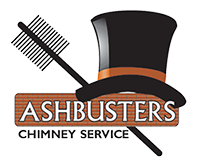
Every homeowner should know the basics on the combustion process. Having a working knowledge on this can lessen your bill and ensure the safety of your whole family.
What is it and how does it affect my chimney?
We talk a lot about combustion in the chimney business, because combustion affects the safety of your chimney and the quality of the air inside your home. We’d like to take a minute to explain what combustion is, so you know exactly how it affects your chimney and your health. Then you’ll be able to make confident decisions about how to operate your fireplace safely, know when you need to have service performed, and why.
Combustion and creosote are partners. Bad combustion equals more creosote, and good combustion equals less creosote. Creosote is a bad by-product of fire, though it’s an unavoidable one. In fact, understanding a little bit about combustion is going to help you understand a whole lot more about creosote. So let’s break it down for you:
Combustion is the process of burning. Basically, it’s the process that gets us fire. Combustion needs three elements: fuel, heat, and oxygen. The right combination of these three elements oxidizes the fuel, which produces light and heat, and alakazam—ooooo, pretty fire.
But what does this mean for me?
In a perfect world, with perfect combustion, this process takes place at exactly the right temperature, and has exactly the right amount of oxygen and fuel. That’s what complete combustion is. This would be a fire that produces no smoke or by-products. Now, as we well know, we don’t live in a perfect world—and try as you might, you’ll never build the perfect fire—which is why you need us.
Combustion as we know it (which is what we call incomplete combustion) produces toxic pollutants that stick to the inside of your chimney (creosote) and affect your health.
- Hazardous air pollutants (HAPs) that can cause cancer
- Fine particle pollution (ash) that damages lung tissue and creates respiratory problems
- Volatile organic compounds (VOCs)
- Carbon monoxide, formaldehyde, nitrogen oxides
It’s a no-brainer that we all want to avoid these pollutants, so it’s important to know how to operate your fireplace in a way that increases combustion as much as possible to reduce the nasty side effects of incomplete combustion. We’ve got some great info on how to build a good fire, how to choose the right wood, and how to get rid of creosote.
The best way to stay ahead of incomplete combustion is by keeping up with routine chimney maintenance. Have your chimney inspected and cleaned annually. So give us a call when it’s that time of year—when it comes to your chimney, we do it all.
